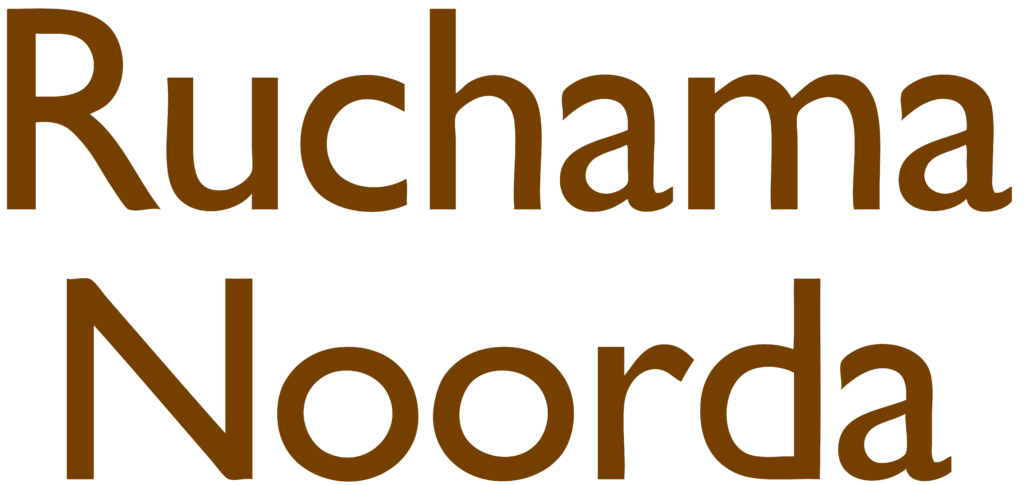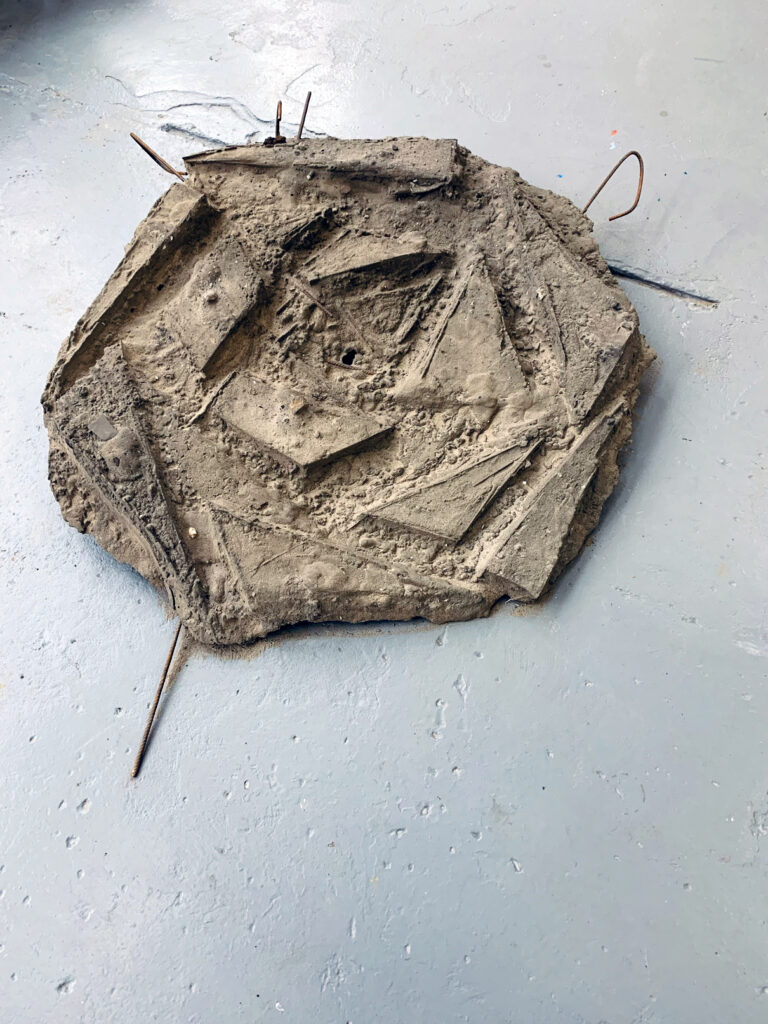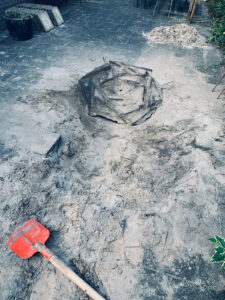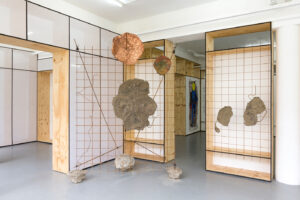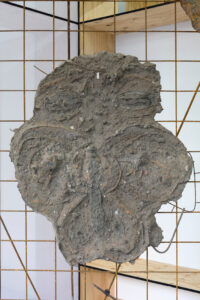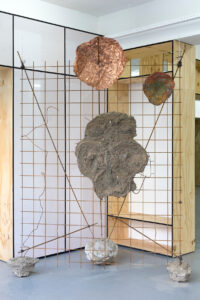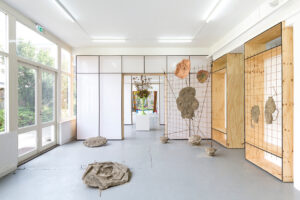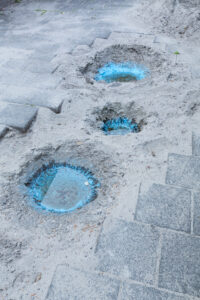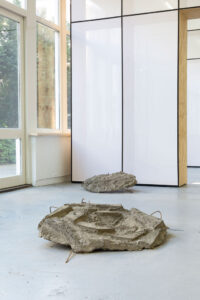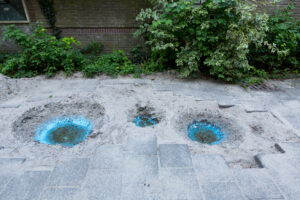Circadian Power Plant
The Nest Art Centre, host in 2021 of the Is it possible to be a revolutionary and like flowers? show sits dwarfed in the shadow of the monumental brick façade of the early C20th electric power plant (built 1906) in The Hague. Noorda’s contribution, a sculptural installation combined with an excavation/ temporary reconfiguration of the walkway immediately adjacent to the gallery was designed to reflect on both the contrast in scale, style, mission and function of the two buildings and the (over)shadowing of the post-industrial by the industrial eras they each represent.
I began thinking about electricity and power, how the earth and air connect, how solar radiation and the energy stored beneath the earth are split and joined together. I dug up the paving stones on the exterior pedestrian walkway directly facing the space I’d been allocated inside the gallery and dug three shallow pits, excavating in the process, bits of coal, brick and iron: the material residue left behind over the century in which the plant had been in operation.
I took a kitchen knife and hacked crude line drawings of three flowers into the compacted hollows left behind by the extruded tiles, turning the negative spaces into moulds. Next, I laid thin strands of rebar picked up from nearby demolition sites inside the pits to strengthen the casts and give them definition. Then I poured in the cement. As the liquid began to settle, I felt the flowers erupting through the dirt, mouths writhing with their tongues sticking out- the sound of earth cracking open under pressure. When the cement had set, I turned them over and saw that one of the flowers looked like a lilac with five neatly overlapping petals, while another, more Gorgon-like, resembled a rose- a concentric mass of whorls turned in towards a tightly wound centre. The third earth cast was abstract and amorphous. The rose became the most compelling form for me. It was also by far the heaviest piece to move. In fact, I found it impossible to lift at first, but eventually I managed to get my arms around it, pull myself upright and carry it into the exhibition space, dragging a trail of dirt and dried cement behind me across the gallery floor. Beyond the weight of its historical associations – the rosy cross,, the red rose of socialism or romantic love – the rose stood for itself- an impenetrable vortex turned in upon itself set upright on a rigid stem of thorns.
I hung the violet at the centre of a metal grid with antler-like antennae extending upwards from each corner alongside copper satellite dish-sunflowers, their faces turned towards the sun. The rose and the amorphous form were placed on the floor at the feet of a triangle of rebar nested in the grid. Two other broken cement pieces were suspended on a second grid mounted to one side.
Ruchama Noorda
The three pit-pools on the exterior walkway were painted blue and soon filled up with rain.
CIRCADIAN POWER PLANT: installation, Is it possible to be revolutionary and like flowers?, curated by Laurie Cluitmans, Heske ten Cate and Eva Burgering, The Nest Art Centre, the Hague, the Netherlands, September 10 – December 19, 2021.
https://nestruimte.nl/en/exhibition/is-it-possible-to-be-a-revolutionary-and-like-flowers/
